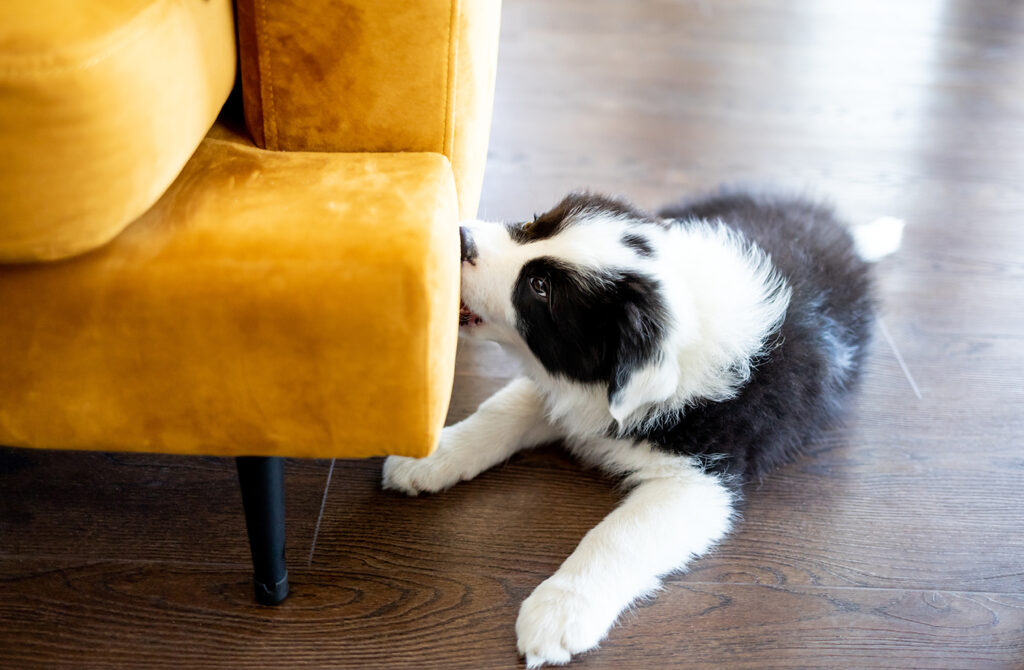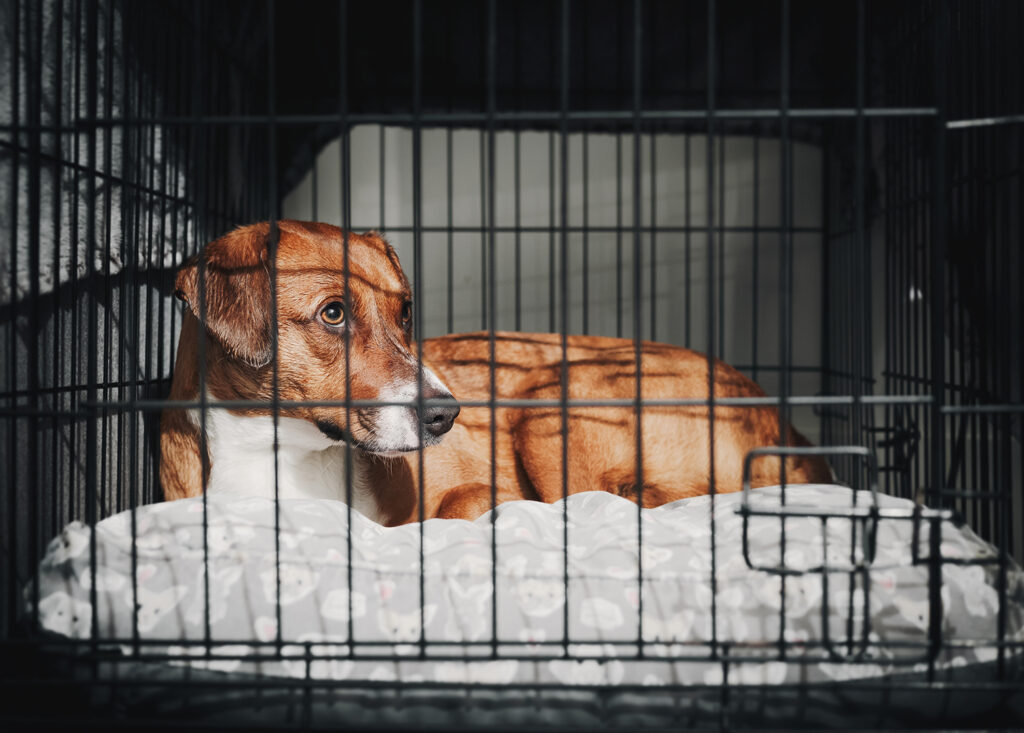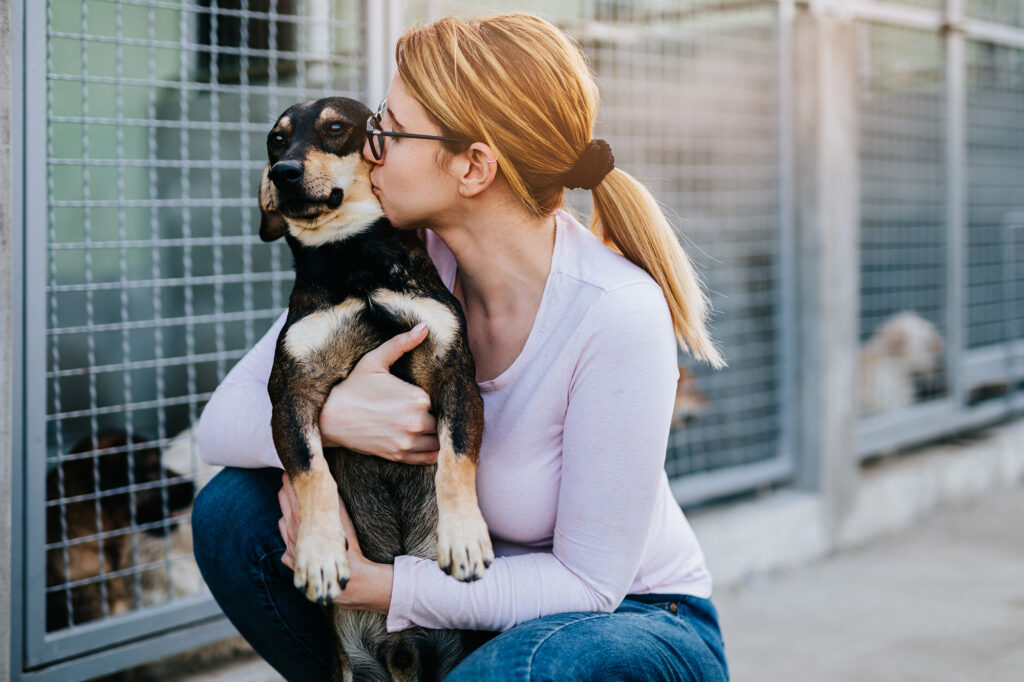Rescue Dog Separation Anxiety 101: Helping and Preventing Separation Anxiety in Dogs
Bringing home a rescue dog is a rewarding experience, but it can come with some challenges, one of which is separation anxiety. Many rescue dogs have experienced trauma, abandonment, or instability in their past, which can make adjusting to a new home feel overwhelming. If your dog is showing signs of separation anxiety, don’t worry. With patience, understanding, and training, you can help them feel safe and secure. In this blog, we’ll explore rescue dog separation anxiety and offer practical tips for helping your furry friend find peace when you’re away.
Why Does Rescue Dog Separation Anxiety Happen?
Understanding rescue dog separation anxiety is the first step toward helping them. For many dogs, their past experiences and lack of training play a role in how they react to being left alone. Rescue dogs often come from backgrounds where they faced abandonment, neglect, or harsh living conditions, all of which can leave lasting damage. Here are some common reasons why rescue dogs may develop separation anxiety:
- Attachment to Their New Owners: For many rescue dogs, forming a bond with their new owners is a big deal. While this attachment is positive, it can create anxiety when the dog’s favorite person leaves.
- Working from home: Covid taught us that being with your dog 24 hours a day is not always a good thing. One of the fallouts from all this togetherness was with our pets. Spending so much time together negatively impacted their ability to spend time alone. In order for your dog to feel safe spending time alone, they must get comfortable spending a little time alone each day. This only happens with regular practice.
- Sleeping arrangements: Like working from home, sleeping in the bed can create intense feelings of attachment and even neediness in our dogs. There is a strong correlation between sleeping in bed with their parents and developing separation anxiety. If your dog struggles with spending time alone, make sure to get them out of your bed at nighttime. Save the snuggles for during the day.
- Crate training: Like learning to spend some time alone, learning to be comfortable being confined is very important for your dog’s behavioral health. All dogs should learn how to feel comfortable in a crate. If they go to the vet, or the groomer, travel, or need to evacuate, they will most likely be required to use a crate. If you haven’t worked on crate training previously, this would be unnecessarily stressful for your pet. Be sure to start your crate training as soon as you get your new pup.
- Sudden Changes in Routine: Dogs, especially those in new homes, thrive on routine and consistency. If their new environment involves a busy, unpredictable schedule, it can lead to increased anxiety.
How Can Dogs Who Are Experiencing Separation Anxiety Act?
Rescue dog separation anxiety can manifest itself in many ways, with symptoms ranging from mild to severe. When your dog feels stressed or scared about being left alone, they may display difficult behaviors, which are often signs of distress. Recognizing these signs early is key to helping them feel more secure.
Excessive Barking or Howling
When your dog is left alone, they may vocalize their distress by barking or howling. This is often a sign that they’re trying to call out to you, or they’re anxious about your absence.
Destructive Behavior
Dogs with separation anxiety may turn to destructive behaviors like chewing furniture, shoes, or other household items.

Pacing or Restlessness
A dog suffering from separation anxiety might start pacing in circles or moving aimlessly around the house when they sense you’re about to leave or when they realize you’ve left. This is their way of trying to cope with the stress of being alone.
Incontinence
Many dogs with separation anxiety will urinate or defecate indoors, even if they’re usually house-trained. The anxiety of being alone can trigger this response, especially if it’s combined with feelings of fear and panic.
Attempts to Escape:
Some dogs may try to escape from crates or rooms when they’re left alone. This can be dangerous, as they may hurt themselves while trying to break free.
Dog Separation Anxiety in Their Crate
If your dog has not been properly introduced to the crate, it can lead to increased anxiety. For others, the smaller space creates a feeling of safety in a natural, den-like atmosphere. For dogs with separation anxiety, being in a confined space can increase their anxiety. Be sure to start your crate training gradually. We recommend getting a properly sized crate that your dog can stand up and turn around in. Make sure it is safe and sturdy for your pup. Wire, airline, and collapsible crates can all be dangerous or easy to escape from. We like the brands RuffLand Kennels, Gunner Kennels, and Impact Crates. Start by feeding your dog in the crate twice a day. Slide the bowl of food to the back of the crate and allow the dog to go in at its own pace. Start with short sessions and gradually increase the amount of time your dog spends in the crate. If your dog is really struggling, anxiety medication from your vet can help.

How Long Does Separation Anxiety Last in Dogs (and Rescue Dogs)?
The duration of separation anxiety in dogs can vary depending on history, temperament, and the steps taken to address the anxiety. Some dogs may improve after a few weeks of consistent training, while others may take months to show progress. It’s important to remember that every dog is different, and there isn’t a one-size-fits-all timeline. Several factors can influence how long separation anxiety lasts.
Severity
Some dogs experience mild anxiety, which may resolve quickly with proper training and reassurance. However, dogs with more severe anxiety may take longer to overcome their anxiety.
Age and Temperament
A dog’s age and personality can also affect how quickly they adapt to changes. Younger dogs may have more energy and be more adaptable, while older dogs may take more time to adjust. A dog’s overall temperament—whether they are naturally more anxious or confident—can also play a role in how long the anxiety lasts.
Consistency of Training
The more consistent you are with training, leaving, and returning, the quicker your dog will understand that being left alone is not something to fear. Gradual desensitization and positive reinforcement are key techniques that can shorten the timeline for improvement.
External Support
If your dog’s anxiety doesn’t improve after weeks of training, seeking help from a trainer can make a world of difference. Trainers who specialize in separation anxiety can tailor a plan for you, offering guidance and troubleshooting along the way.
Six Tips on Preventing Separation Anxiety in Rescue Dogs
The earlier you can address your dog’s separation anxiety, the easier it will be to help your dog feel comfortable and secure in their new home. If you’ve just adopted a rescue dog, here are some practical tips on preventing separation anxiety in dogs.
1. Consistency
Dogs thrive on routine, and consistency makes them feel safe. Start by feeding, walking, and playing with your dog at the same time each day. A predictable routine helps your dog understand what to expect, especially during transitions or when you need to leave.
2. Gradual Alone Time
If your dog hasn’t been left alone before, or if they’re adjusting to a new home, it’s important to gradually get them used to being alone. Start by leaving them alone for short periods, then gradually increase the time you’re gone to teach them that you will always return.
3. Create a Safe Space
Designating a quiet, comfortable space for your dog can help reduce anxiety. Whether it’s a bed, a crate, or a special room, having a dedicated area where your dog can retreat when you leave can make them feel more secure. Fill this space with familiar items, like toys, blankets, or a piece of clothing with your scent.
4. Engagement
Mental stimulation is key to reducing anxiety. Providing puzzle toys, treat-dispensing toys, and interactive play can keep your dog occupied while you’re away.
5. CBD for Separation Anxiety in Dogs
Natural remedies like CBD are gaining popularity for managing anxiety in dogs. CBD can help to calm your dog’s nerves without causing sedation. If you’re considering CBD for your dog, be sure to consult your veterinarian to ensure it’s a viable solution for your pet.
6. Hiring a Trainer
Sometimes, the best way to prevent separation anxiety is with professional help. An experienced trainer can assess your dog’s behavior and create a tailored plan to address their anxiety. At BlackPaw Dog Training, we specialize in helping dogs with separation anxiety, offering guidance and support to help you and your dog through the process.
A Few More Tips for Fosters of Rescue Dogs with Separation Anxiety
Fostering a rescue dog is a rewarding and honorable undertaking, but it comes with its own challenges, especially when dealing with separation anxiety. As a foster parent, you play a crucial role in helping rescue dogs with separation anxiety and adjusting these pups to their new life and learning that being left alone doesn’t have to be scary. Here are some tips to help you manage and ease separation anxiety in foster dogs:
7. Provide Attention and Reassurance
Foster dogs, especially those with separation anxiety, need extra attention during their transition period. Spend quality time with them, offering reassurance and affection, but try to avoid overindulging them in a way that could lead to clinginess.
8. Keep Departures and Arrivals Low-Key
Dogs with separation anxiety are very sensitive to changes in your routine. To avoid causing additional stress, try to keep your departures and arrivals as calm as possible. Don’t make a big deal out of leaving or coming home—this helps reduce the anxiety surrounding your absences.
9. Use Positive Reinforcement
Reward your foster dog when they remain calm during your departures and returns. Positive reinforcement, such as treats or praise, will help your foster dog associate leaving and returning with positive experiences.
Benefits of Hiring a Professional Rescue Dog Separation Anxiety Trainer Like Us
While there are plenty of things you can do on your own to help your dog manage separation anxiety, sometimes the best solution is to enlist the help of a professional trainer. Separation anxiety can be complex, and the same approach doesn’t always work. Contacting a professional service, like Black Paw Dog Training, can provide many benefits when aiding your dog’s separation anxiety.
Comprehensive Training
Every dog is unique, and a professional trainer can design a personalized training plan that addresses your dog’s specific needs. Whether your dog is showing mild signs of anxiety or severe distress, a trainer can provide custom strategies.
Experts in Dog Behavior
Professional trainers have in-depth knowledge of canine behavior. By understanding the underlying issues—such as trauma, attachment, or fear—a trainer can create a more effective plan for reducing anxiety.
Consistent Guidance
Separation anxiety training can take time and patience, and sometimes you need guidance along the way. A professional trainer can provide ongoing support, answering your questions, troubleshooting challenges, and adjusting the plan to ensure progress.
Positive Training Methods
At Black Paw Dog Training, we use positive reinforcement techniques that help your dog feel safe and confident while they learn. Professional trainers understand the importance of a gentle approach that builds trust and long-lasting behavior changes.
Effective Problem Solving
A professional trainer can identify issues you might have missed and offer solutions. Whether it’s a change in routine, introducing new anxiety-relieving techniques, or offering additional tools, a trainer can help resolve problems and move the process forward.
Leave their Anxieties in the Past, With Us
Dealing with rescue dog separation anxiety can be challenging, but with the right approach, it’s completely manageable. Whether you’re just beginning to notice signs of anxiety or you’ve been working through it for a while, remember that progress takes time, patience, and the right support. With consistent training, a predictable routine, and a lot of love, you can help your dog feel more secure and comfortable when you’re not home.
At Black Paw Dog Training, we specialize in helping dogs with separation anxiety. Our team understands the unique needs of rescue dogs and uses gentle, effective methods to help them overcome their fears. If you’re ready to help your dog leave their anxieties behind and step into a calmer, more confident future, we’re here to help every step of the way. Contact us today to start the journey toward a more peaceful tomorrow for you and your furry friend!

